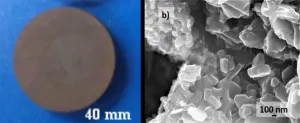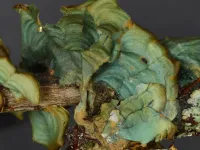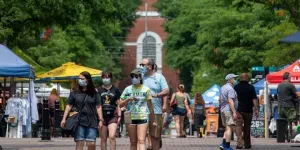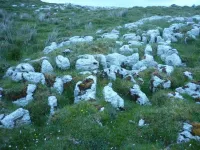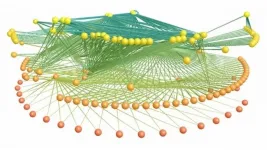Borrowing from birds, experts reduce search times for novel high-entropy alloys to seconds
2021-01-14
(Press-News.org) Computational materials science experts at the U.S. Department of Energy's Ames Laboratory enhanced an algorithm that borrows its approach from the nesting habits of cuckoo birds, reducing the search time for new high-tech alloys from weeks to mere seconds.
The scientists are investigating a type of alloys called high-entropy alloys, a novel class of materials that are highly sought after for a host of unusual and potentially beneficial properties. They are lightweight in relation to their strength, fracture-resistant, highly corrosion and oxidation resistant, and stand up well in high-temperature and high-pressure environments -- making them attractive materials for aerospace industry, space exploration, nuclear energy, and defense applications.
While the promise of these materials is great, they present major difficulties to scientists attempting to search for and customize them for use in technologies. Because these alloys are constructed of five or more different elements, they are expensive and difficult to develop and search experimentally, making an Edison-like approach a nonstarter. With so many ingredients, and so many different ways to construct them, there are nearly endless permutations of recipes for their design. Among literally billions of options, how do researchers narrow their search to a few excellent potential candidates for an application?
The answer in this case is an evolutionary algorithm, using a hybrid version of a computer program developed ten years ago, called Cuckoo Search (CS). Cuckoo birds are brood parasites, laying their eggs in the nest of a host bird such that they end up rearing the bigger, stronger cuckoo chick as one of its own.
"This 'survival of the fittest' strategy from the behavior of birds is the idea behind Cuckoo Search," said Duane Johnson, a computational materials scientist at Ames Laboratory. Each egg represents a possible solution, competing to be the best solution in any given nest in a fixed number of possible nests. The best solution of each nest competes against other nests, until the best solution is found.
The Ames Laboratory team put a twist on the Cuckoo Search, which greatly speeded up the process of locating ideal alloys or the best "egg" within a huge number of possibilities. The original CS takes advantage of a mathematical concept called Lévy flight, which computational theorists use to their advantage in searching extremely large data sets. But, while this method works for large data sets, the Ames Lab team found that pairing another mathematical concept, a Monte Carlo algorithm, with Lévy flight, greatly reduced the time to achieving optimal candidates for high-entropy alloys, providing optimal models almost on the fly.
"With the model-building bottleneck eliminated, computational design can be performed that is currently impractical, said Johnson, "As our hybrid CS is problem-agnostic, it offers application in optimization in many diverse fields."
INFORMATION:
The research is further discussed in the paper "Accelerating computational modeling and design of high-entropy alloys," authored by Rahul Singh, Aayush Sharma, Prashant Singh, Ganesh Balasubramanian, and Duane D. Johnson; and published in Nature Computational Science.
Ames Laboratory is a U.S. Department of Energy Office of Science National Laboratory operated by Iowa State University. Ames Laboratory creates innovative materials, technologies and energy solutions. We use our expertise, unique capabilities and interdisciplinary collaborations to solve global problems.
Ames Laboratory is supported by the Office of Science of the U.S. Department of Energy. The Office of Science is the single largest supporter of basic research in the physical sciences in the United States, and is working to address some of the most pressing challenges of our time. For more information, please visit https://energy.gov/science.
[Attachments] See images for this press release:
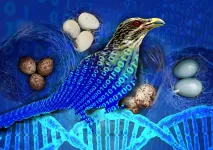
ELSE PRESS RELEASES FROM THIS DATE:
2021-01-14
Researchers from the PTSD Systems Biology Consortium, led by scientists from the Walter Reed Army Institute of Research, have identified distinct biotypes for post-traumatic stress disorder, the first of their kind for any psychological disorder. "These biotypes can refine the development of screening tools and may explain the varying efficacy of PTSD treatments", said Dr. Marti Jett, leader of the consortium and WRAIR chief scientist.
Publishing their work in Molecular Psychiatry in a manuscript first authored by WRAIR's Dr. Ruoting Yang, researchers used blood tests from male, combat-exposed veterans across a three year period to identify two PTSD biotypes, G1--characterized ...
2021-01-14
TROY, N.Y. -- As cancer and tumor cells move inside the human body, they impart and are subject to mechanical forces. In order to understand how these actions affect cancer cell growth, spread, and invasion, a team of engineers at Rensselaer Polytechnic Institute is developing new models that mimic aspects of the mechanical environment within the body, providing new insight into how and why tumors develop in certain ways.
In research published today in Integrative Biology, a team of engineers from Rensselaer developed an in vitro -- in the lab -- lymphatic vessel model to study the growth of tumor emboli, collections of ...
2021-01-14
Superconductivity already has a variety of practical applications, such as medical imaging and levitating transportation like the ever-popular maglev systems. However, to ensure that the benefits of applied superconductors keep spreading further into other technological fields, we need to find ways of not only improving their performance, but also making them more accessible and simpler to fabricate.
In this regard, magnesium diboride (MgB2) has attracted the attention of researchers since its discovery as a superconductor with multiple advantages. It is a lightweight, easily processible material made from widely abundant ...
2021-01-14
MEDFORD/SOMERVILLE, Mass. (Jan. 14, 2021)-- Exposure to discrimination plays a significant role in the risk of developing anxiety and related disorders, even - in a first - after accounting for potential genetic risks, according to a multidisciplinary team of health researchers led by Tufts University and the Harvard T.H. Chan School of Public Health.
Researchers determined that even after controlling for genetic risk for anxiety, depression, and neuroticism, greater reports of discrimination experiences remained associated with higher scores of anxiety and related disorders. The findings, recently ...
2021-01-14
GAINESVILLE, Fla. --- Scientists have found a new species of fleshy verdigris lichen, thanks to DNA analysis of museum specimens. Misidentified by its original collectors, the lichen is only known from 32 specimens collected in North and Central Florida scrubland between 1885 and 1985. Now the hunt is on to find it in the wild - if it still exists.
The lichen, named Cora timucua in honor of Florida's Timucua people, is critically endangered, even more so than the federally protected Florida perforate reindeer lichen, and possibly extinct. Researchers are holding out hope that C. timucua may persist in undisturbed pockets of the state's dwindling pine scrub habitat, though recent searches came up empty.
"The million-dollar question is 'Where is this lichen?'" said Laurel Kaminsky, a digitization ...
2021-01-14
A novel new study suggests that the behavior public officials are now mandating or recommending unequivocally to slow the spread of surging COVID-19--wearing a face covering--should come with a caveat. If not accompanied by proper public education, the practice could lead to more infections.
The finding is part of an unique study, just published in JMIR Public Health and Surveillance, that was conducted by a team of health economists and public health faculty at the University of Vermont's Larner College of Medicine in partnership with public health officials for the state of Vermont.
The study combines survey data gathered from adults living in northwestern Vermont with test results that showed whether a subset of them had contracted COVID-19, a dual research ...
2021-01-14
Scientists who highlighted the bug-busting properties of bacteria in Northern Irish soil have made another exciting discovery in the quest to discover new antibiotics.
The Traditional Medicine Group, an international collaboration of scientists from Swansea University, Brazil and Northern Ireland, have discovered more antibiotic-producing species and believe they may even have identified new varieties of antibiotics with potentially life-saving consequences.
Antibiotic resistant superbugs could kill up to 1.3 million people in Europe by 2050 - the World Health Organisation (WHO) describes the problem as "one of the biggest threats to global health, food security, and development today".
The search for replacement antibiotics to combat ...
2021-01-14
If you want to understand an ecosystem, look at what the species within it eat. In studying food webs -- how animals and plants in a community are connected through their dietary preferences -- ecologists can piece together how energy flows through an ecosystem and how stable it is to climate change and other disturbances. Studying ancient food webs can help scientists reconstruct communities of species, many long extinct, and even use those insights to figure out how modern-day communities might change in the future. There's just one problem: only some species left enough of a trace for scientists to find eons later, leaving large gaps in the fossil record -- and researchers' ability to piece together the food webs from the past.
"When things die and get preserved as fossils, all the ...
2021-01-14
When three galaxies collide, what happens to the huge black holes at the centers of each? A new study using NASA's Chandra X-ray Observatory and several other telescopes reveals new information about how many black holes are furiously growing after these galactic smash ups.
Astronomers want to learn more about galactic collisions because the subsequent mergers are a key way that galaxies and the giant black holes in their cores grow over cosmic time.
"There have been many studies of what happens to supermassive black holes when two galaxies merge," said Adi Foord of Stanford University, who led the study. "Ours is one of the first to systematically look at what happens to ...
2021-01-14
The reproductive cycle of viruses requires self-assembly, maturation of virus particles and, after infection, the release of genetic material into a host cell. New physics-based technologies allow scientists to study the dynamics of this cycle and may eventually lead to new treatments. In his role as physical virologist, Wouter Roos, a physicist at the University of Groningen, together with two longtime colleagues, has written a review article on these new technologies, which was published in Nature Reviews Physics on 12 January.
'Physics has been used for a long time to study viruses,' says Roos. 'The laws of ...
LAST 30 PRESS RELEASES:
[Press-News.org] Borrowing from birds, experts reduce search times for novel high-entropy alloys to seconds

